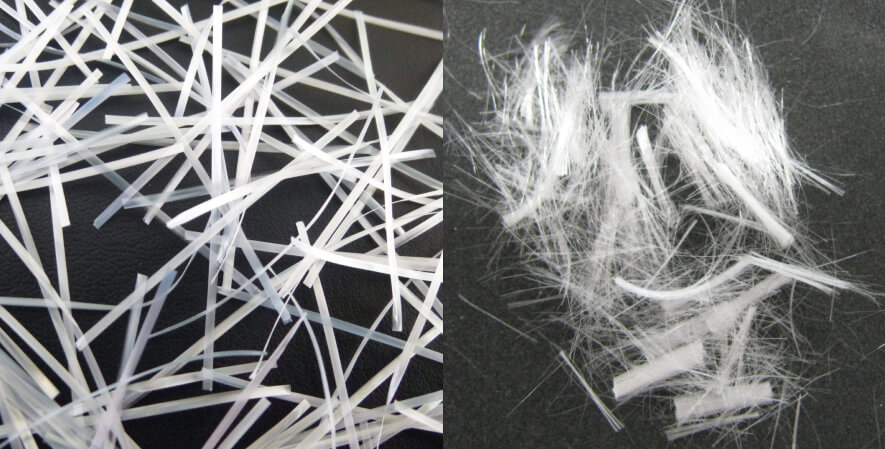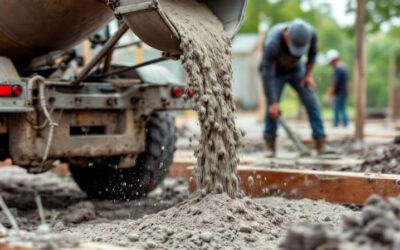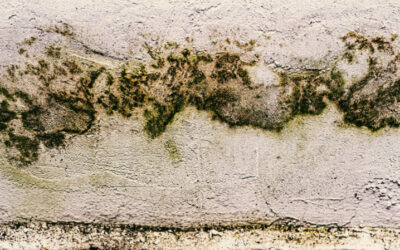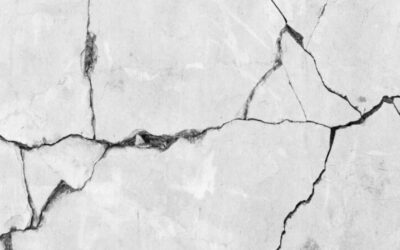Concrete, a cornerstone of modern construction, is renowned for its compressive strength. However, its inherent weakness lies in its susceptibility to cracking under tensile stress.
To overcome this limitation, engineers and builders have long sought methods to enhance concrete’s performance. One of the most effective advancements in this area is the incorporation of fiber reinforcement.
The Power of Fiber Reinforcement in Concrete
Fiber reinforcement fundamentally alters the behavior of concrete by addressing its weakness in tension. Concrete is naturally strong when compressed, but it can easily crack or fail when subjected to pulling or bending forces.
The addition of fibers, whether they are micro or macro in size, acts as a network of reinforcement distributed throughout the concrete matrix. This network significantly improves the concrete’s ability to withstand tensile forces, enhancing its overall durability and longevity.
So, what exactly does fiber do for concrete? Primarily, it increases the tensile strength of the concrete, making it more resistant to cracking. These fibers work by bridging cracks that may form within the concrete, effectively holding them together and preventing them from widening and propagating.
This bridging action also allows the concrete to maintain its structural integrity even after cracking has occurred, providing valuable post-crack strength and facilitating load transfer across the cracks.
Furthermore, fiber reinforcement can lead to a substantial increase in the concrete’s capacity to absorb energy and resist impact forces. In regions that experience freeze-thaw cycles (though less relevant in tropical Bali), some types of fibers can also improve the concrete’s resistance to damage from these cycles, as well as enhance its resistance to abrasion.
The decision to use fiber reinforcement offers numerous advantages beyond just improving the structural performance of the concrete. By mitigating shrinkage cracking, which is a common cause of damage, fiber reinforcement contributes to a longer service life for concrete structures.
In certain applications, the use of macrofibers can even reduce or eliminate the need for traditional steel reinforcement like rebar or wire mesh, potentially leading to faster construction times and reduced labor costs.
Unlike traditional steel reinforcement, which is typically placed in specific locations within the concrete, fibers are dispersed homogeneously throughout the mix, providing a more uniform and comprehensive reinforcement. This even distribution also enhances safety on construction sites by minimizing the handling of cumbersome steel reinforcement.
Macrofiber vs. Microfiber: Understanding the Key Differences
While both macrofibers and microfibers serve the purpose of reinforcing concrete, they differ significantly in their size, primary applications, and the specific benefits they offer. Understanding these distinctions is crucial for selecting the right fiber for your construction project in Indonesia.
Microfibers: Preventing Early-Age Cracks
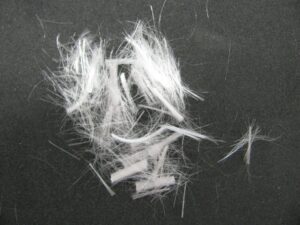
Microfibers, as their name suggests, are very fine fibers with a diameter of less than 0.3 millimeters (0.012 inches). Their primary role in concrete is to combat plastic shrinkage cracking, a phenomenon that occurs in the first 24 hours of the curing process due to the rapid loss of moisture from the concrete surface.
These early-age cracks, while often small, can compromise the long-term durability and aesthetic appearance of the concrete. Microfibers work by creating a three-dimensional network within the fresh concrete, which helps to distribute the stresses caused by shrinkage and prevent the formation of these cracks.
Additionally, microfibers can contribute to a more uniform distribution of bleed water within the concrete, which aids in the finishing process and reduces the potential for surface defects.
The typical dosage rate for microfibers is relatively low, ranging from 0.05% to 0.2% by volume of the concrete mix. However, specific product recommendations may vary, with some fibrillated microfibers requiring a slightly higher dosage (around 0.75 to 1.5 pounds per cubic yard) to achieve optimal performance.
While microfibers excel at preventing early-age cracking, they generally do not provide significant structural reinforcement to hardened concrete at typical dosage rates.
However, some fibrillated microfibers, when used at higher dosages (minimum 1.5 pounds per cubic yard), can offer an alternative to light-gauge welded wire reinforcement for controlling temperature and shrinkage cracks.
The incorporation of microfibers represents a proactive approach to enhancing concrete’s resilience during its vulnerable initial curing phase.
Beyond their primary function of crack control, microfibers offer a range of other benefits that contribute to the overall quality and longevity of concrete, particularly relevant in the Indonesian context. They can improve the concrete’s resistance to freeze-thaw damage and surface spalling.
By increasing the density and reducing the porosity of the concrete matrix, microfibers can also decrease the penetration of water and air. This is especially important in the humid tropical climate of Indonesia, where moisture ingress can lead to various durability issues.
Furthermore, microfibers can help reduce carbonation and capillary absorption within the concrete, increase its flexural strength, improve its homogeneity and isotropy (uniformity of properties in all directions), limit concrete bleeding (the upward migration of water), increase its resistance to abrasion, and even enhance its impact resistance by making the concrete more ductile.
These multifaceted benefits underscore the value of microfibers in creating more durable and long-lasting concrete structures.
Macrofibers: Enhancing Strength and Durability
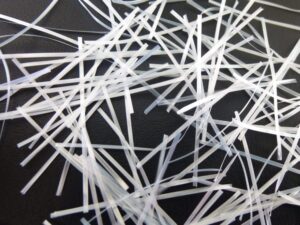
Macrofibers, in contrast to their smaller counterparts, have a diameter equal to or greater than 0.3 millimeters (0.012 inches). Their primary purpose extends beyond early-age crack control to providing significant structural reinforcement to the hardened concrete.
Macrofibers are designed to minimize and even eliminate both plastic and drying shrinkage cracking. More importantly, they are capable of providing post-crack load-carrying capacity, effectively “sewing” together cracks that occur due to overloading or other stresses and preventing them from propagating further.
In many applications, macrofibers can serve as a direct replacement for traditional steel reinforcement, offering comparable or even superior performance when the appropriate dosage is used.
The typical dosage rate for macrofibers is higher than that of microfibers, generally ranging from 0.2% to 1% by volume or even higher depending on the specific application and performance requirements. For typical residential and commercial slabs on ground, a dosage rate of around 3.0 pounds per cubic yard is often sufficient for temperature and shrinkage protection.
However, for more demanding structural applications, consulting with an engineer to determine the precise dosage is crucial. The selection of the appropriate macrofiber dosage is fundamentally performance-based, tailored to meet the specific structural demands of the project. Macrofibers represent a robust solution for significantly enhancing the strength and long-term durability of concrete structures.
Macrofibers offer all the advantages of microfibers (when used at a sufficient dosage) and provide a substantial boost in several key performance areas. They significantly increase the concrete’s durability, flexural toughness (resistance to bending and cracking), and resistance to both impact and abrasion.
Their ability to provide post-crack residual strength and transfer loads across cracks is a critical factor in improving the overall structural integrity of concrete elements. By holding cracks tightly together, macrofibers further enhance the durability and flexural toughness of the concrete.
They also increase the concrete’s resistance to fatigue (weakening under repeated loading) and shear forces. In certain structural designs, the enhanced strength provided by macrofibers can even allow for a reduction in the thickness of concrete slabs.
Similar to microfibers, macrofibers are distributed homogeneously throughout the concrete, leading to a more durable and crack-resistant material.
In many projects, especially where steel reinforcement is traditionally used, macrofibers can offer a more cost-effective and time-saving alternative. Furthermore, synthetic macrofibers are non-magnetic and non-corrosive, making them an excellent choice for exterior pavements and other applications where aesthetics and safety are paramount.
The comprehensive benefits offered by macrofibers make them a compelling option for a wide range of construction needs in Indonesia, where structural integrity and long-term performance are essential.
Selecting the Right Fiber for Your Indonesian Property
Choosing between macrofibers and microfibers depends heavily on the specific requirements of your construction project and the environmental conditions in Indonesia.
Considering the Tropical Climate
Indonesia’s tropical climate, characterized by high temperatures and humidity, presents unique challenges for concrete durability. The increased rate of evaporation in hot weather can lead to a higher risk of cracking in concrete.
High humidity can increase the permeability of concrete, potentially leading to the corrosion of any embedded steel reinforcement and other forms of deterioration. The frequent wetting and drying cycles due to rainfall, a common occurrence in tropical regions, can also be detrimental to the long-term durability of concrete structures.
In this context, the benefits offered by both microfibers and macrofibers become particularly valuable. Microfibers can help mitigate the increased risk of cracking due to rapid evaporation by controlling plastic shrinkage.
Their ability to increase concrete density and reduce porosity can also help minimize the penetration of water and harmful substances, which is crucial in a humid environment like Indonesia.
Macrofibers, with their capacity to enhance overall durability and control the propagation of cracks, are also essential for ensuring the longevity of concrete structures exposed to the elements in Indonesia.
The ability of macrofibers to provide structural reinforcement can be particularly important in regions prone to seismic activity, as fiber-reinforced concrete can offer improved ductility and resistance to seismic forces.
When to Use Microfibers
Microfibers are the ideal choice when the primary concern is preventing early-age plastic shrinkage cracking in concrete elements such as slabs, pavements, and walls. They are also suitable when the focus is on achieving an improved surface finish in addition to crack prevention.
For residential projects with moderate structural demands, where temperature and shrinkage cracking are the main considerations, microfibers can provide an effective and economical solution.
While freeze-thaw resistance might be less of a concern in most of tropical Bali, microfibers can still be beneficial in regions with some temperature fluctuations or for specific applications where this property is desired.
When to Use Macrofibers
Macrofibers are the preferred option for projects that require significant structural reinforcement, such as industrial floors, pavements designed for heavy loads, bridges, and other structures that need to withstand substantial forces.
They are also recommended when comprehensive crack control, addressing both plastic and drying shrinkage, is necessary. If the goal is to replace traditional steel reinforcement to potentially save costs and construction time, macrofibers offer a viable and often superior alternative.
Given Indonesia’s location in a seismically active zone, the enhanced ductility and fracture behavior provided by macrofiber-reinforced concrete can be a significant advantage.
Furthermore, for projects where enhanced durability, resistance to impact and abrasion, and increased flexural toughness are critical, macrofibers are the clear choice.
Fiber Reinforcement: A Sustainable Building Material Choice
Synthetic fibers used for concrete reinforcement can be a more sustainable option compared to traditional steel reinforcement in certain applications. By potentially requiring less material to achieve the same level of performance, synthetic fibers can contribute to a reduction in overall resource consumption.
Furthermore, the manufacturing process for some synthetic fibers can result in lower CO2 emissions compared to the production of steel rebar.
The enhanced durability and extended lifespan of concrete structures reinforced with fibers also contribute to sustainability by reducing the need for frequent repairs and replacements.
As the construction industry continues to evolve, the use of fiber reinforcement represents a step towards more sustainable building practices.
Ready to Enhance Your Concrete with Sustainable Solutions?
For those seeking eco-friendly and sustainable building materials in Bali, Indonesia, look no further than ecoSmart. ecoSmart is a dedicated provider of high-quality, sustainable construction solutions, committed to helping you build responsibly.
Understanding the unique challenges and environmental considerations of building in Bali, ecoSmart offers a range of products and services designed for long-lasting and low-maintenance results.
Explore the range of eco-friendly building materials offered by ecoSmart, including potential solutions for concrete reinforcement that can enhance the performance and longevity of your projects while minimizing their environmental footprint.

